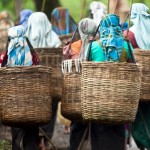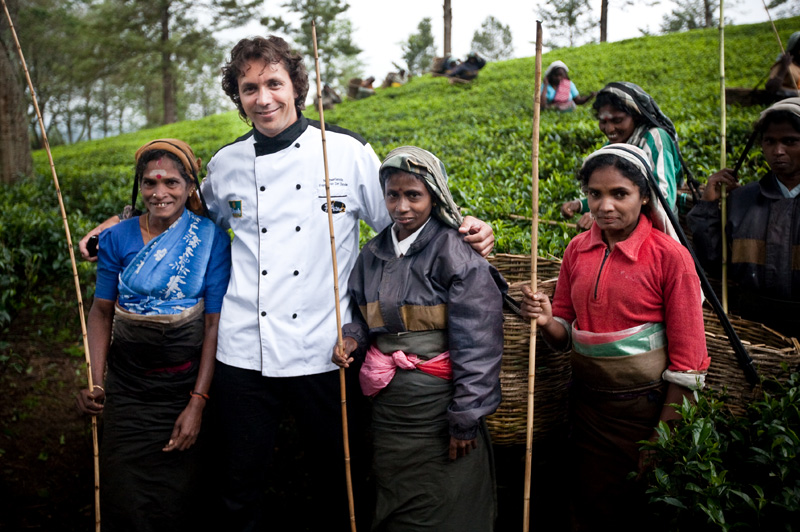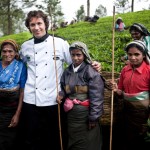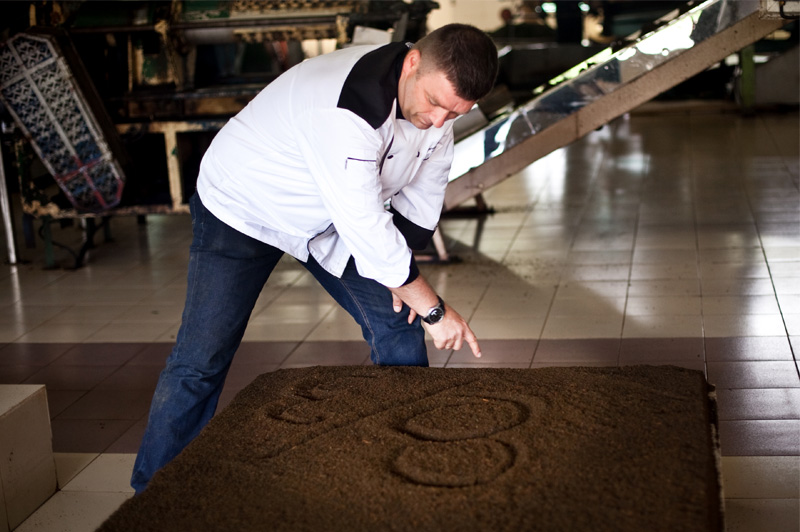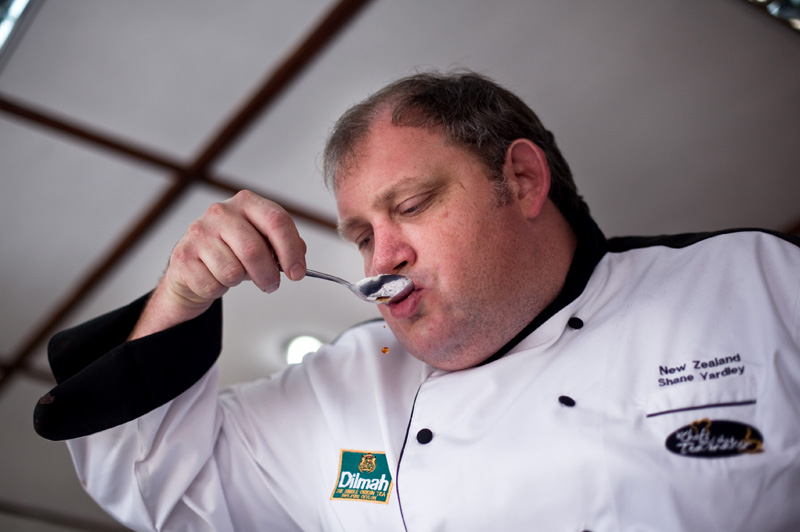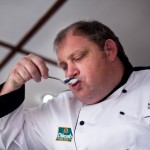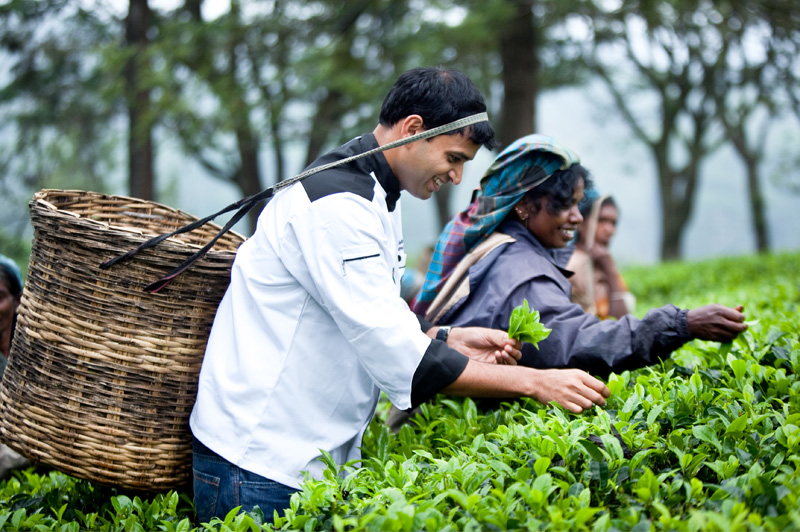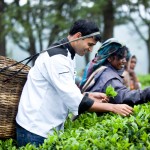The cup of Dilmah that sits in front of you in all its golden, fragrant glory is the result of many hours of work put in by plantation workers. After spending 6 days of experimenting with tea to fuse new flavour in to food and drinks it was time for the chefs to experience firsthand what actually happens before the tea is packed into a neat little bags and put on a supermarket shelf.
Somerset Estate where the chefs spent day 7 lies on the Western slopes of the Central Hill of Sri Lanka, set deep in the iconic Dimbula Valley . It is what you would call the heart of Sri Lankan tea country. The tea pickers clad in colourful saris deftly plucked tea leaves dropping them effortlessly in to the rattan baskets on their back, their smiles as warm as the morning sunshine that cleared the mists. The chefs on tour gamely tried their hand at it but soon realised that looks can be deceiving and plucking tea so expertly takes years of practise. Then on to the factory where the handpicked tea was weighed and sorted. Withering, rolling and fermenting follows and finally the tea leaves are dried and fired.
Dilmah tea is made the traditional way to ensure its unique characteristics and subtle flavours are not lost during the production process. This is why it is called ‘real’ tea.






